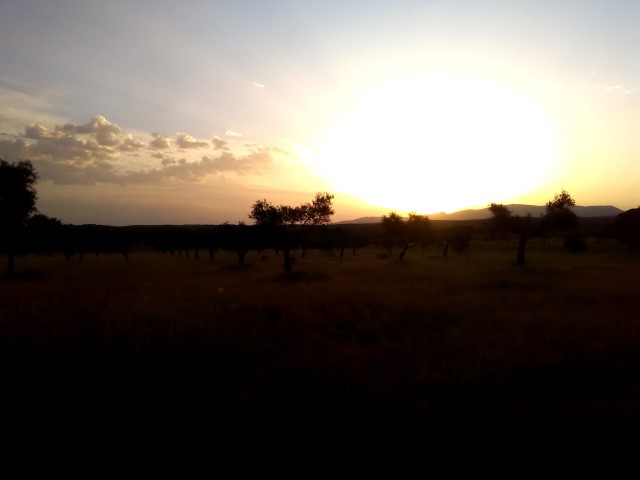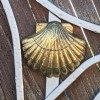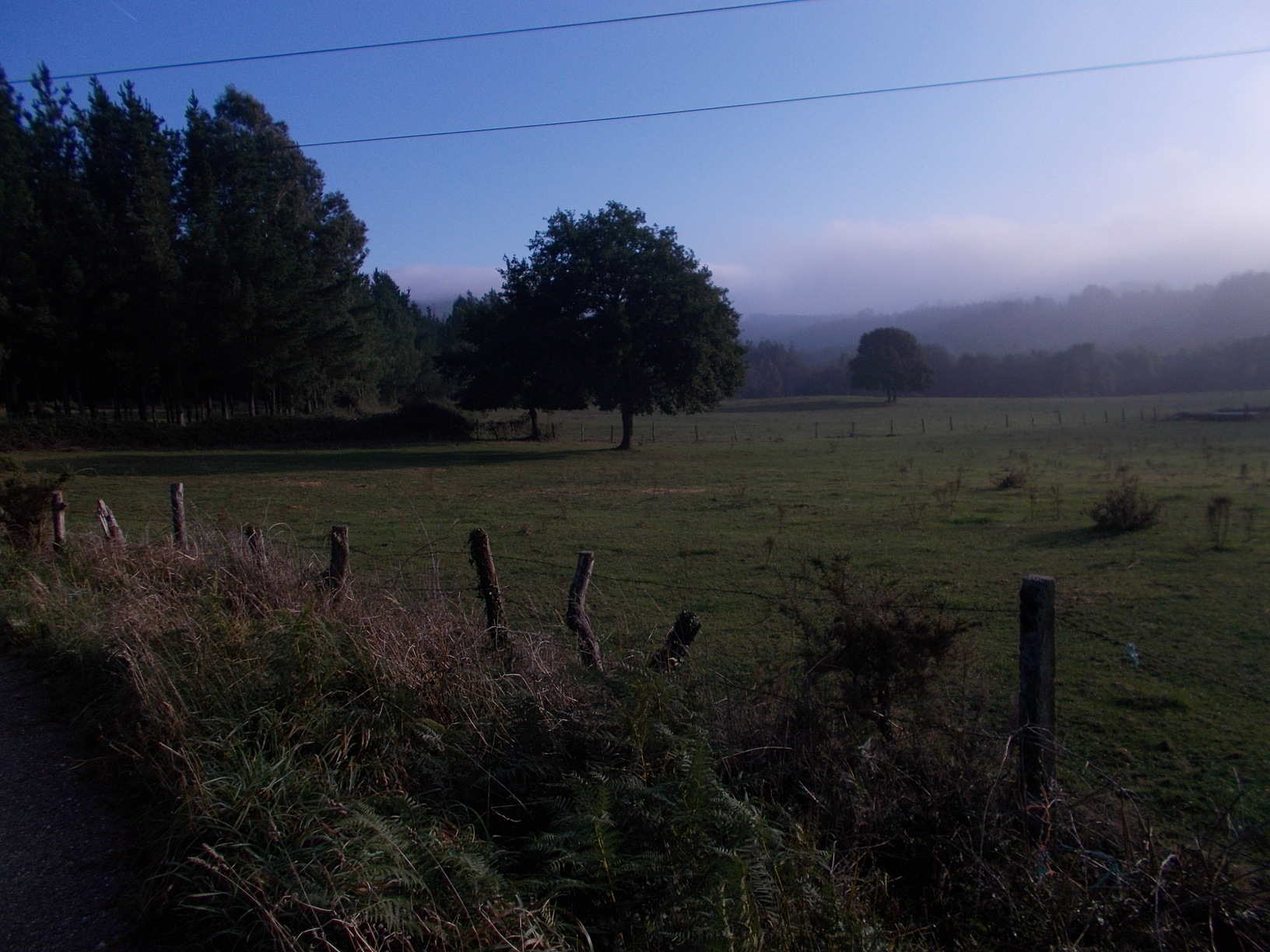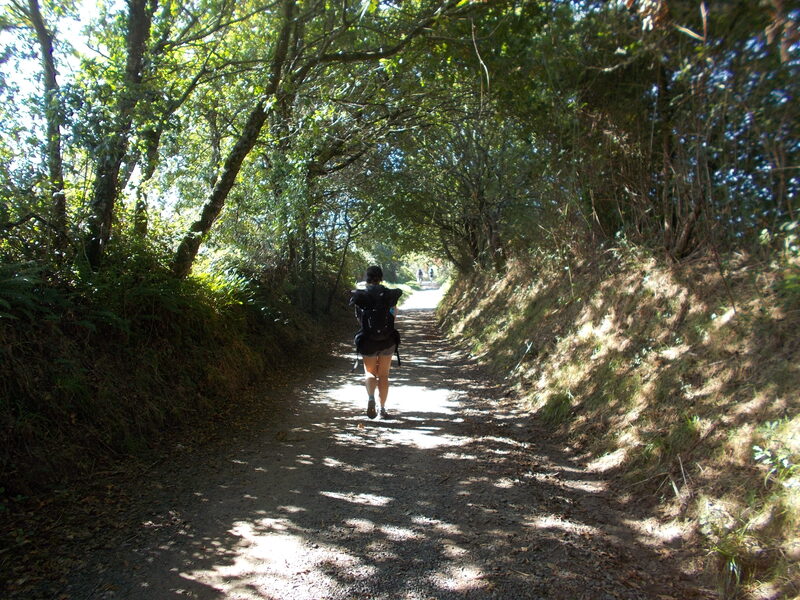Doing the Camino on bike was always one of my goals, and something I wanted to try. But which way should I follow? Frances wasn’t really an option, and I did Norte just recently. San Salvador & Primitivo combination was tempting, but perhaps too difficult (if not impassable) on a bike loaded with luggage. Via de la Plata, with its flatter terrain all the way until you reach Galicia, seemed like a perfect choice. But is it really the case?
I decided to interview Isaac, one of my Spanish friends, who did Via de la Plata on bike last year. Instead of asking him for a travelogue I decided to ask him practical questions that may interest other people (including me) who consider cycling from Seville to Santiago. This article is the outcome of the interview. If you feel like I omitted something important, feel free to contact me so we can add the missing information to the article. Thank you!
Table of Contents
In general, is Via de la Plata a good way for a cyclist?
Isaac: It is definitely much better than Camino del Norte which I did two years ago. Via de la Plata is much flatter, and you won’t find virtually any technical terrain on it, with an exception of few short stretches in Galicia, which aren’t superbly technical though, just a bit too steep for my liking, hence I had to push my bike for a while.
In my opinion, anyone in a decent shape with a normal bike can enjoy this way without stretching themselves to their limit. I also met other cyclists on the way. Sharing accommodation and meeting the same people several days in a row is an important part of camino experience for me, which wasn’t the case on the Norte, since not many people attempt it on bike. Obviously you are faster than pilgrims who walk, so unless there are other cyclists around you, you’re going to meet new people every day, and it is harder to make meaningful connections…
Talking about bike, what type of bike would you recommend for Via de la Plata?
Isaac: I’d say a trekking bike with front suspension is perhaps the best choice. I’ve met people cycling Via de la Plata on slightly adjusted road bikes, and it is certainly doable, at least until you reach Galicia, but they had to deal with punctures and mechanical issues often.What I try to say here is that you should not underestimate those dirt roads.
They look flat and friendly, but in fact there are many small stones and sometime also plants with sharp thrones on them, so if you have a road bike with typical tires, it is pretty easy getting a puncture. You should also realize that infrastructure isn’t that good along Via de la Plata, and if you have technical issues you cannot repair on your own, you may have to push your bike for quite a while to reach a bike repair shop, or at least a bigger town…
Did you face many mechanical issues while cycling Via de la Plata?
Isaac: I faced some issues at the beginning, mostly with my chain, because I underestimated the need to clean and lubricate it daily. The roads are really dusty, and combined with the hot weather this can really do some damage to your chain and gears. Of course that’s not the case in a rainy season in Andalusia or Extremadura (if we can find a rainy season in this region), or in general in Galicia where it rains pretty often. But in a dry season it can cause you a lot of problems.
I had only one puncture all the way to Santiago, which is partly a miracle and partly due to my precautions (buying new thicker and heavier tires before embarking on the journey). One time I had to visit the bicycle repair shop in Merida, because I had problems with my luggage carrier, which is, in my experience, the most common serious technical problem long-distance cyclists experience in general. Some strings did not hold properly, the luggage fell down a bit and it was touching the wheel anytime I cycled on uneven terrain, or made turns. It eventually caused some damage to my bags, and I knew I had to fix the issue. I cannot emphasize enough the importance of investing into a good luggage carrier, and to test it in advance. You need to carry your luggage, and a seemingly trivial problem may eventually cost you your chances of reaching Santiago…

– A typical dirt road on Via de La Plata, especially in Andalusia and Extremadura. Sure enough you do not need mountain bike for such a way, but road bike won’t do either. Hence your best option is either a gravel bike or a trekking one.
What time of a year will you recommend for cycling Via de la Plata?
Isaac: I will definitely recommend spring, the second half of April and May. It is already nice and warm on the majority of the way, so you do not need to carry that much clothes with you. Every kilo you save makes the experience more enjoyable. At the same time the temperatures don’t reach 35 or even 40 degrees Celsius as they do in Andalusia and especially Extremadura in the summer months. Autumn (late September and October) is also an option, though the landscape isn’t as nice as it is in spring, plus it can get quite cold in Galicia.
Anyway, I’d say that you can cycle Via de la Plata anytime from early March to late October, but make sure to check the weather and pack accordingly. Some pilgrim places may also be closed, but with a bike you have the advantage of flexibility. One can easily cycle extra ten or even twenty kilometers, especially on a flatter terrain, and do it in an hour. Walking an extra ten kilometers in a sun, when you are already tired, is another story, let alone twenty.
How long did it take you to cycle all the way from Seville to Santiago?
Isaac: It took me 19 days to reach Santiago, including a rest day in Salamanca. I wouldn’t say that I pushed it too hard. On the contrary, I tried to enjoy the landscape and visit the historical sights in cities like Merida, Salamanca, or Caceres. Having said that, I am in a decent shape and there were two days when I managed to cover more more than 100 kilometers on a day. In my opinion, cyclists in a great shape can do this way in ten days, or even less. If you want to enjoy the places you pass, however, and do not push it, three weeks is a good time to aim for.
I also want to stress that you should count with “forced days off”. It can happen that you encounter a technical problem you cannot fix, it is weekend and you have to stay somewhere until Monday to get your bike repaired. I met some people who developed a sore bottom from sitting on their bike in a heat day after day, and had to take three days off in Salamanca before they were able to sit on their bikes again and continue. Of course, even here you can take some precautions, such as using creme and picking the right saddle (a hard one from leather ideally), but you never know how your body will react to such an experience. Hence it is better to allocate more time for your trip. If you reach Santiago early, you can always continue to Cape Finisterre.
Are albergues (pilgrim hostels) “cyclist friendly” on Via de la Plata?
Isaac: They are, though sometimes you’ll have to leave your bike outside, which some people may find uncomfortable. I also saw in a few albergues the policy that “walking pilgrims had a priority to get a bed“, but since I didn’t cycle in the high season, I didn’t have to race for beds with other pilgrims.
What I want to stress though is that you cannot count on finding some mechanical supplies in the albergues, such as spare tubes, or wrenches to fix the most common issues you may have on your bicycle. You need to carry such stuff yourself, or rely on supplies in the bigger cities along Via de la Plata. While I found pilgrim hostels “cyclists friendly”, they focus primarily on walking pilgrims, and are built and run accordingly.

– Sunrises and sunsets on Via de la Plata are especially beautiful, with the endless skies all around you. Camera cannot capture the beauty though, and you have to go and cycle (or walk) the way to see it yourself 🙂
Did you find any stretches of Via de la Plata dangerous for a cyclist, for example narrow roads with no shoulder?
Isaac: There were a few such stretches, but they were never too long, and always only in the proximity of bigger cities, like Salamanca or Zamora, and of course near Santiago. I found the drivers quite friendly though. Some of theme honked their horn, but mostly as a sign of support and encouragement. Of course, I had a red light below my saddle on always when cycling on a busier road, and wore a cycling jersey in bright colors so drivers could easily spot me.
Of course, an accident may happen, but that’s true for any road in the world. I believe you shouldn’t be afraid. What I want to stress though is that you should install a mapping application to your smart phone, or your tracking device. Not only it will help you to follow the Camino. It also allows you to see alternative roads to busy highways, and if you feel certain road isn’t safe enough for you on bike, you can take another one to reach the same place (Note from Matej: I recommend Mapy.cz or Maps.me as two best mapping apps for the Camino, or any other hiking/cycling adventure.)
Is there anything else you’d like to say to people who consider cycling Via de la Plata?
Isaac: One thing I would like to stress is always taking plenty of water with you. It may seem you do not need it, since you can always reach the next refill spot quickly on the bike, so why carrying extra weight? But the truth is that you never know when you will get a puncture or face other mechanical issue. Having to push a fully-loaded bike in a heat of Spanish sun is no fun, and it can end up a disaster if you do not hydrate yourself properly. Hence make sure to always have at least a liter of spare water with you (water you won’t need in normal circumstances, since you’ll reach next refreshment point).
Other than that, just enjoy the experience with everything that belongs to it. I had a lot of fun on this ride, but I also suffered on some hot days. If you are a history lover and a cyclist at the same time, Via de la Plata is a perfect Camino for you…
* Note from Matej: I made this interview with Isaac in Spanish, so certain things may get lost in translation. Still I hope it helped you decide whether or not to do Via de la Plata on bike, and how to prepare for this Camino. Thank you for reading!
May also interest you:




![Ultralight Packing List for Camino de Santiago [2025 Edition]](https://caminolovers.com/wp-content/uploads/2022/03/altra-shoes-640-x-480.jpg)


